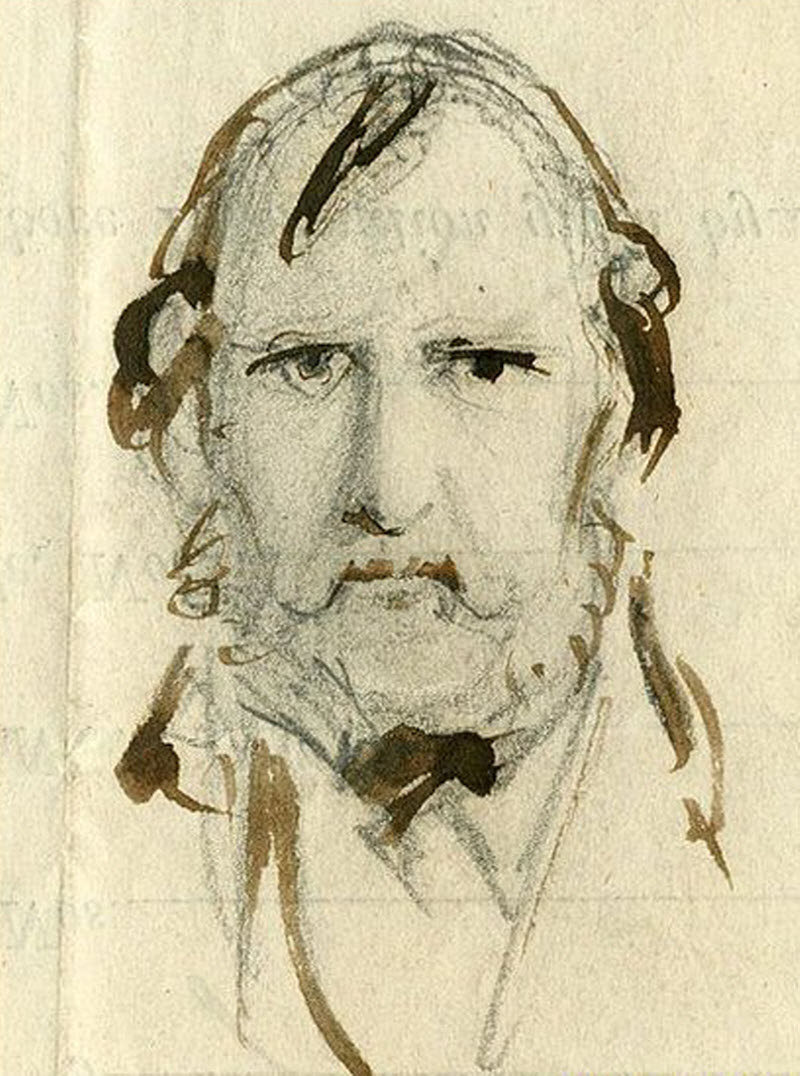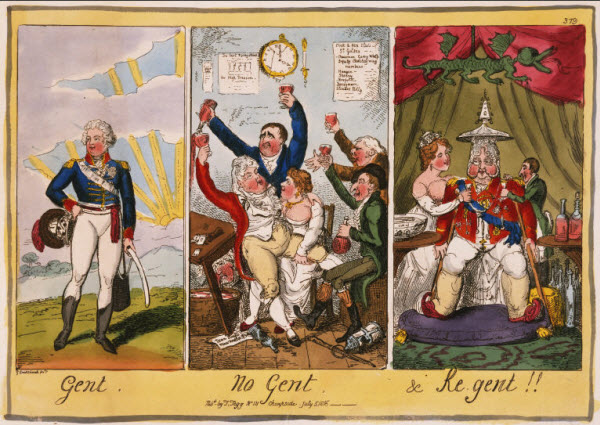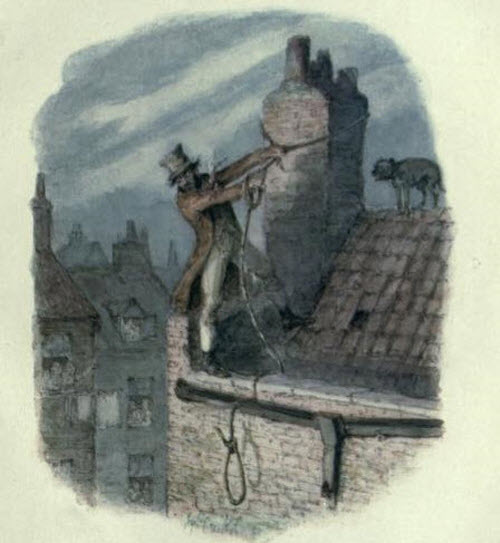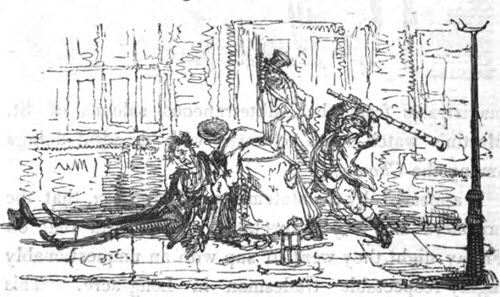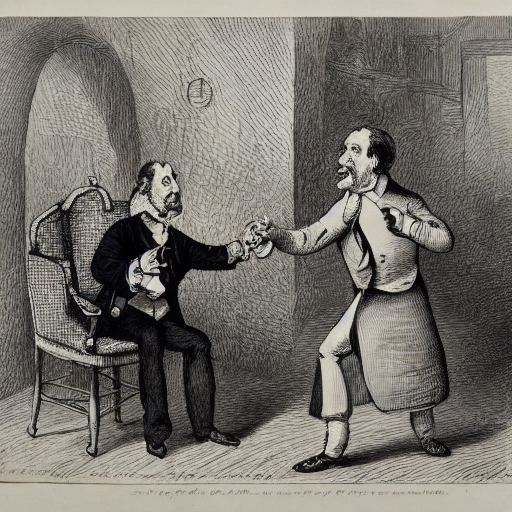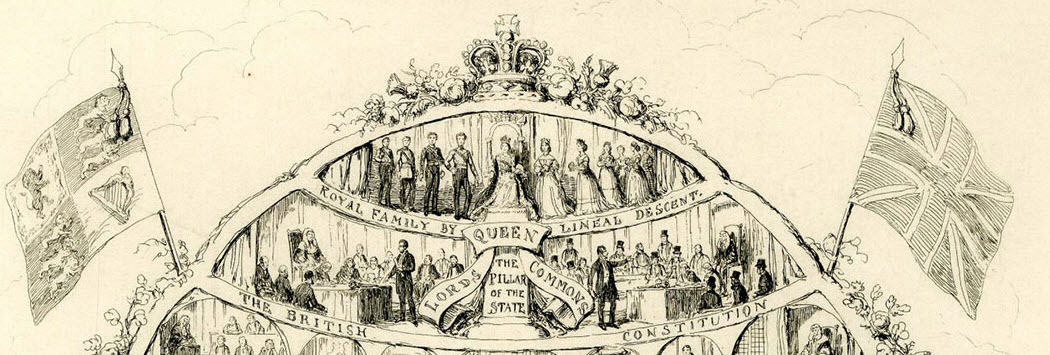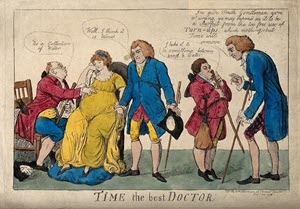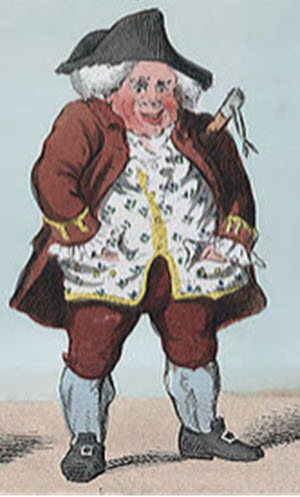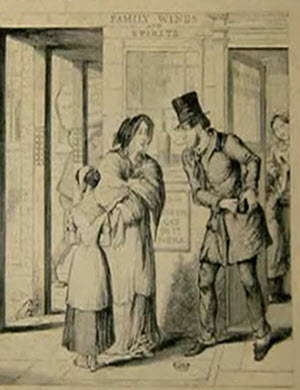
George Cruikshank was born in London on September 27, 1792 to Isaac and Mary Cruikshank. His parents were originally from Scotland, and migrated to the metropolis of London before George was born. Cruikshank was one of five children, but only George and his older brother Robert survived into adulthood. His father died when George Cruikshank was still a teenager.
George Cruikshank did not attend school beyond elementary school. His formal education was limited but not unusual for the times. His most valuable education was gained by working as an assistant to his father Isaac Cruikshank a successful engraver, painter and illustrator. From his father, Cruikshank learned the art and technique of etching, drawing, and illustration. However he far surpassed his father and older brother as an illustrator.
Cruikshank's early work was produced under the direction and tutelage of his father. He worked primarily on magazine illustrations and helped produce copper etchings for printing presses, then one of the only ways of reproducing graphics and illustrations. His father died when Cruikshank was still a teenager, and Cruikshank struck out on his own, rapidly building a reputation as a caricaturist and illustrator.
His early career focused on caricatures, and he produced many drawings lampooning the Royal Family, as well as satirizing various social issues and popular fads such as the religious mania surrounding Joanna Southcott. Cruikshank's caricatures were so savage that he was once offered 100 pounds, then a very substantial amount, to refrain from caricaturing the King in any immoral situation. He also drew caricatures of political figures such as Napoleon and political issues such as the Opium War, the Irish Rebellion and other hot issues of the day.

Cruikshank's early career coincided with the Napoleonic Wars, the War of 1812 and other major significant political events, so he had no lack of subjects to draw upon. His style was easily recognizable and very humorous. He met with great success and was published in almost all of the newspapers of the time including early drawings which appeared in the scandalous satirical magazine called The Scourge. His commercial success was enhanced by the growing middle class, which developed a taste for buying prints. Cruikshank produced and sold thousands of prints in both color and black and white. His favourite medium was etching but he also produced wood cuts.
In 1823, George Cruikshank branched out into book illustration with the publication of the Humourist. He went on to illustrate over 800 books, including classics by Charles Dickens, Sir Walter Scott and William Ainsworth. His illustrations were so popular, that they often guaranteed good sales of a book.
 In the late 1840s, Cruikshank became interested in the temperance movement, which advocated a total prohibition on alcohol. He campaigned passionately in support of the temperance movement and produced propaganda and educational material on the dangers of alcohol. One of his best known works in this area were his illustrations for The Bottle, which dealt with the horrors of alcohol abuse. Cruikshank's social campaigning may have been rooted in the fact that his father and brother were both alcoholics. His father Isaac Cruikshank had died after winning a drinking contest, probably from alcohol poisoning. His brother Robert, himself an illustrator, squandered his talents due to his alcoholism and never achieved much success.
In the late 1840s, Cruikshank became interested in the temperance movement, which advocated a total prohibition on alcohol. He campaigned passionately in support of the temperance movement and produced propaganda and educational material on the dangers of alcohol. One of his best known works in this area were his illustrations for The Bottle, which dealt with the horrors of alcohol abuse. Cruikshank's social campaigning may have been rooted in the fact that his father and brother were both alcoholics. His father Isaac Cruikshank had died after winning a drinking contest, probably from alcohol poisoning. His brother Robert, himself an illustrator, squandered his talents due to his alcoholism and never achieved much success.
Cruikshank was, for a time, the most renowned illustrator in England. He was favourably referred to as the "Modern Hogarth" by critics, as a compliment to Cruikshank's talent and style, but also vilified by some critics. Around 1870 he suffered a stroke which caused his hands to tremble. His talents began to decline and he received fewer and fewer commissions. His financial circumstances deteriorated and he found himself in difficulty.

In 1872, Cruikshank published an essay entitled the Artist and the Author in which he claimed to be the originator of Oliver Twist, as well as Ainsworth's The Miser's Daughter and the Tower of London, claims which were soundly rejected by both authors. Cruikshank continued to draw, but his commissions became less and less. He published his last work in 1875, and died on February 1, 1878 at the age of 85. His artistic career was from 1799 to 1875, a very long period of time.
George Cruikshank lived his entire life in London, and seldom if ever left the city. He was married twice. His first wife Mary Ann Walker (1807–1849) died and two years later on March 7, 1851, he married Eliza Widdison. Neither marriage produced children, but upon his death it was discovered that Cruikshank had fathered 11 illegitimate children with his long time mistress, Adelaide Attree, a former servant of Cruikshank and his wife who lived down the street from them..
Cruikshank was an extremely talented and prolific artist. His illustrations and caricatures cover an amazing range of subjects and display a consistently advanced technique and style. During his long career, Cruikshank produced over 10,000 drawings, including caricatures, illustrations and social commentary. His work illustrated over 800 books including classics by Dickens and other great Victorian writers.
